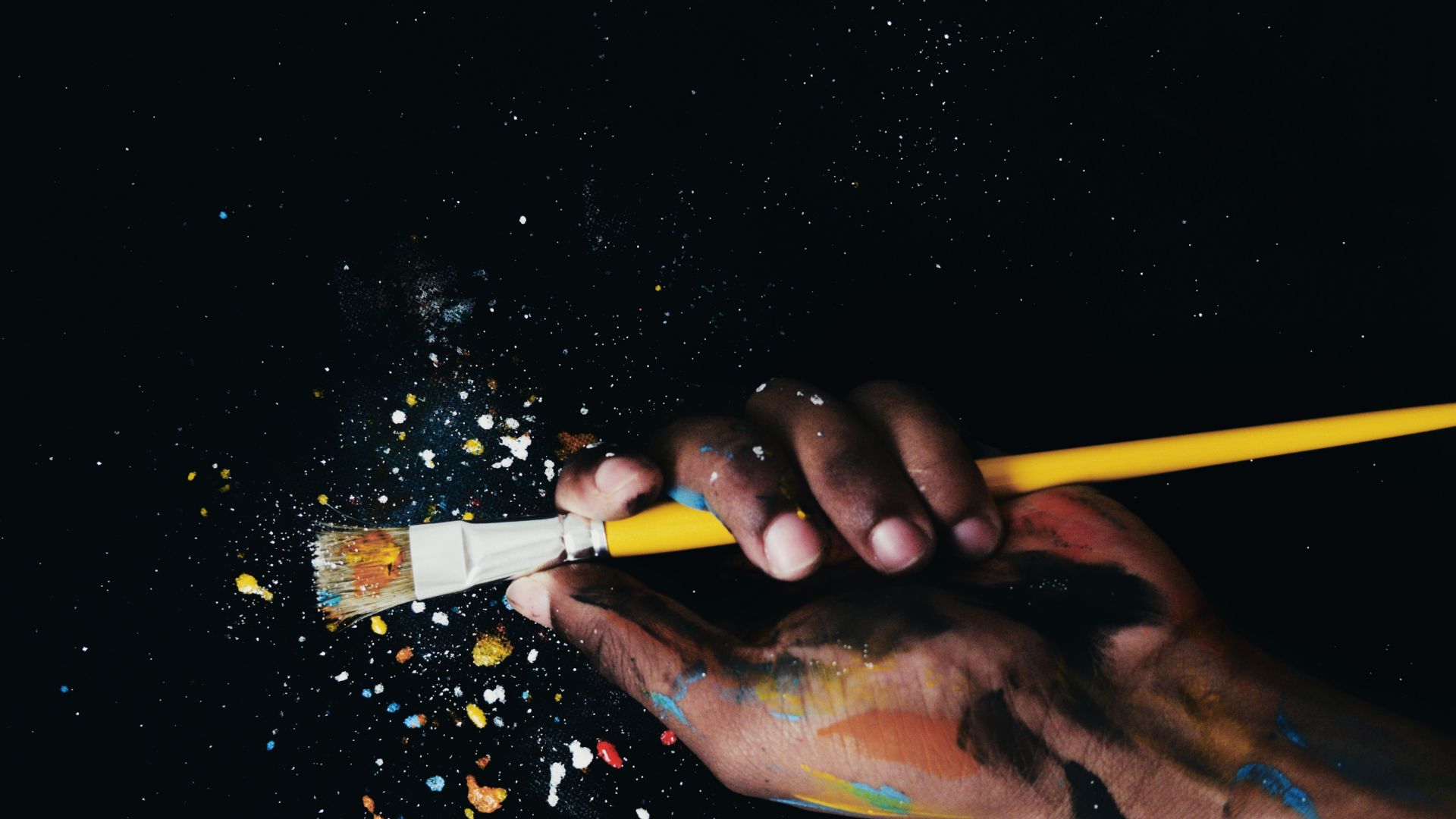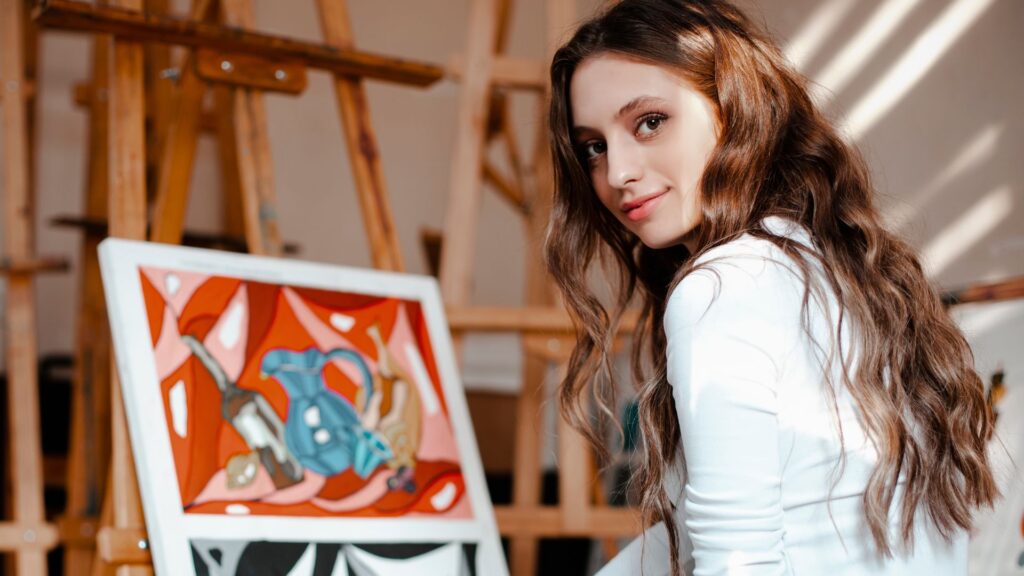
The history of oil painting: From the masters to modern artists
Oil painting is one of the most enduring and revered artistic mediums, known for its rich colours, incredible depth, and ability to capture intricate details. From its humble beginnings in the Renaissance to the innovative approaches of modern artists, oil painting has evolved over centuries, continuing to play a significant role in the art world.
In this article, we’ll take a journey through the history of oil painting, exploring its origins, its golden age, and how it has shaped modern art:
- Early oil paintings and techniques
- The golden age of oil painting
- Modern oil painting
- Continuous evolution and yet still relevant: Oil painting

Early oil paintings and techniques
Oil painting as we know it today has its roots in medieval Europe, though it didn’t gain widespread use until the 15th century. While tempera paint (made from egg yolk and pigment) was the dominant medium for centuries, oil paints gradually replaced it due to their flexibility and ability to produce richer colours and more realistic textures. The early pioneers of oil painting in the Northern Renaissance played a significant role in refining the medium and developing new techniques.
One of the key figures in the early use of oil paint was Jan van Eyck, a Flemish artist who is often credited with perfecting oil painting in the 15th century. Van Eyck’s technique involved the use of oil mixed with pigments, which allowed for a slower drying time compared to tempera paints. This gave artists more time to blend colours and create smooth, seamless transitions, which became crucial in achieving realistic effects. Van Eyck’s famous painting, The Arnolfini Portrait (1434), demonstrates his mastery of oil paints, capturing incredible detail, from the fabric of the clothing to the reflective surfaces of the mirror.
Another key development during this period was the technique of glazing, where thin layers of translucent paint were applied over dried layers. This allowed for depth and luminosity in the final piece, contributing to the realism that would define oil painting for centuries. Van Eyck’s innovation with oil paint paved the way for other artists across Europe to experiment with the medium, leading to its wider adoption in the coming decades.
The golden age of oil painting
The 17th century marked the golden age of oil painting, as the medium was embraced by some of the greatest masters in history. Artists like Rembrandt, Johannes Vermeer, and Caravaggio elevated oil painting to new heights, using the medium to explore light, shadow, and human emotion in ways that had never been seen before.
Rembrandt van Rijn, one of the most celebrated painters in history, is renowned for his dramatic use of light and shadow, a technique known as chiaroscuro. His portraits and self-portraits, such as The Night Watch (1642), show how he used oil paint to achieve depth, warmth, and a lifelike quality. Rembrandt’s ability to capture the human soul through the nuances of light and shadow made him one of the defining figures of the Baroque period. His loose, expressive brushwork also helped to give his paintings a sense of immediacy and emotion, making the viewer feel as though they were seeing the subject in the moment.
Johannes Vermeer, another master of the Dutch Golden Age, is known for his serene and intimate scenes, such as Girl with a Pearl Earring (1665). Vermeer’s use of oil paints allowed him to achieve incredible detail, from the texture of the fabric to the reflective quality of light on surfaces. His ability to capture light in a way that feels natural and warm was revolutionary, and his works remain iconic today for their delicacy and quiet beauty.
Meanwhile, Caravaggio was using oil paints to create powerful, emotional scenes with a bold use of light and contrast. His works, like The Calling of Saint Matthew (1600), feature intense realism and dramatic compositions, transforming religious and mythological subjects into visceral, human experiences. Caravaggio’s influence on Baroque art was profound, and his work helped set the stage for the dramatic emotional expression that would dominate art for the next several centuries.
These artists, and many others during the Baroque period, used oil painting not only to capture realistic depictions of the world around them but also to convey deeper emotional truths. Oil paints provided the flexibility and depth needed to bring these intricate works to life, with each brushstroke contributing to the overall narrative.

Modern oil painting
As the centuries passed, oil painting continued to evolve, particularly in the 19th and 20th centuries. The Industrial Revolution and the rise of modernism brought about dramatic changes in art, and oil painting adapted to reflect these shifts. Artists began to experiment with new techniques, breaking away from the traditional methods that had defined oil painting for centuries.
One of the most famous oil painters of the 19th century was Vincent van Gogh. His bold, expressive use of oil paints and his innovative brushwork made him one of the most influential artists of all time. Van Gogh’s work, such as Starry Night (1889), uses thick layers of paint to create texture and movement, using the material itself to convey emotion and energy. His vibrant use of colour and distinctive style paved the way for future generations of artists, as oil painting became a medium for personal expression rather than just realistic depiction.
In the early 20th century, Pablo Picasso revolutionised oil painting with the development of Cubism, which fragmented the human form into abstract, geometric shapes. Picasso, along with artists like Georges Braque, used oil paint to explore new ways of representing reality. Their use of oil paints in Cubism allowed them to experiment with different perspectives, creating innovative works that challenged traditional notions of representation.
Today, oil painting continues to thrive as a medium, with contemporary artists pushing the boundaries of what can be achieved with the paint. Many modern artists experiment with texture, abstraction, and mixed media, using oil paints to create works that reflect the diversity and complexity of the world around them. Whether it’s photorealism, surrealism, or contemporary abstract expressionism, oil painting remains a versatile and powerful tool for artists.
Continuous evolution and yet still relevant: Oil painting
From the early days of Jan van Eyck to the bold experimentation of modern artists like Picasso and Van Gogh, oil painting has continuously evolved while maintaining its enduring appeal. The medium’s ability to capture light, detail, and emotion has made it one of the most beloved and versatile forms of artistic expression.
Let’s recap what we’ve learned today:
- Oil painting gained prominence in the 15th century, with Jan van Eyck refining its use to achieve richer colours and more realistic textures. Techniques like glazing helped create depth and luminosity.
- The 17th century saw oil painting reach new heights, with masters like Rembrandt, Vermeer, and Caravaggio using the medium to explore light, shadow, and human emotion with incredible detail and realism.
- Artists like Rembrandt used chiaroscuro for dramatic light and shadow, Vermeer captured intimate moments with delicate lighting, and Caravaggio brought bold emotional expression to religious scenes, all with oil paints.
- In the 19th and 20th centuries, artists like Van Gogh and Picasso pushed the boundaries of oil painting, using it for personal expression, texture, and abstraction, paving the way for modern art movements.
- Despite changes over time, oil painting remains a powerful and versatile medium, continuing to influence contemporary artists who use it for various styles, from realism to abstract expression.
Oil painting has influenced countless artists over the centuries, and its rich history continues to shape the art world today. Whether used for realistic portraiture, dramatic still life, or abstract expression, oil paints remain a powerful tool for artists to explore, express, and challenge their creativity.